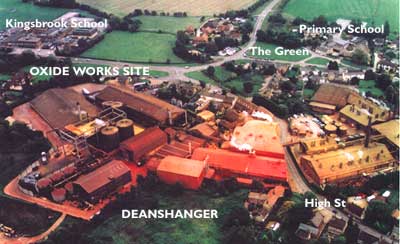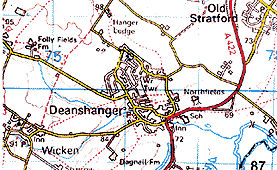


The village is near to many transport routes important in their time, which have influenced its unusual nature. Deanshanger is only 5 miles from Watling Way, the Roman north to south route, and the main Oxford to Stony Stratford road passed through the village.

The site lay empty for nearly 10 years when many local children were able to use it as a giant playground.
Oxide Works However the beginnings of the Second World War, heralded more changes for the site. The Wreschners, refugees from Nazi Germany bought the site in 1937 and established an Iron Oxide works for pigment production. Once again it was a family business and the Wreschner family were paternalistic towards the small village which became their home.


In the early 1980s the Wreschners were bought out, but production carried on until 1998 when the building of a site in China superseded the Deanshanger site. Deanshanger site.
Demolition of the site began in 1999 and was complete by early 2000.
Thus the villagers have seen the passing of the iron heart of the village, which typified Britain's industry of the last two Centuries.



However it is hoped that the memories will live on, kept alive by the newly formed Deanshanger Heritage Society and this research and web site project carried out by Deanshanger CLUTCH club.